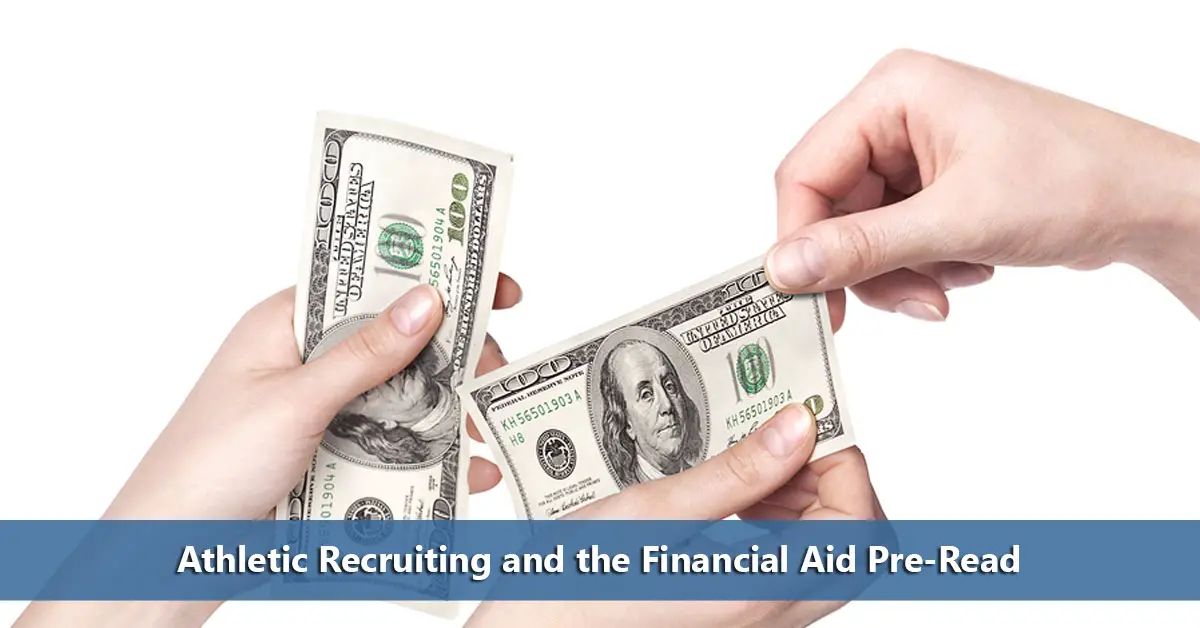 If you want to pay less for college, you need to pay more attention to college statistics. I’m sure many parents and students hip deep in the college admissions process think that they are drowning in college statistics but are still facing the prospect of impossible tuition bills. The problem is that they aren’t paying attention to the right statistics, or at the very least, not considering them in terms of how they affect the cost of going to college.
If you want to pay less for college, you need to pay more attention to college statistics. I’m sure many parents and students hip deep in the college admissions process think that they are drowning in college statistics but are still facing the prospect of impossible tuition bills. The problem is that they aren’t paying attention to the right statistics, or at the very least, not considering them in terms of how they affect the cost of going to college.
Financial Aid
5 Ways to Get Smart About Financial Aid Award Letters
 After diligently reporting their families’ financial information as accurately as possible in the FAFSA under the threat of a $20,000 fine and/or prison, high school seniors are anxiously waiting to receive their financial aid award letters. Now, even though each student’s family situation is different, applicants all completed a standard form for financial aid. Major financial factors such as loss of job or health issues have to be addressed in a separate letter to the financial aid office.
After diligently reporting their families’ financial information as accurately as possible in the FAFSA under the threat of a $20,000 fine and/or prison, high school seniors are anxiously waiting to receive their financial aid award letters. Now, even though each student’s family situation is different, applicants all completed a standard form for financial aid. Major financial factors such as loss of job or health issues have to be addressed in a separate letter to the financial aid office.
So why will the student probably receive financial aid award letters in as many formats as colleges applied to and often designed to deliberately mislead families on how much money they will have to pay?
7 Useful Ways to Compare Colleges
 If you have kids old enough for you to be thinking about the college admissions process and how you’ll pay for it, you also need to be thinking about how you’re going to compare colleges. Because the fact is that you’re going to be comparing lots of colleges, the sooner the better. You’re going to compare colleges when you decide which colleges to visit, which admissions reps to talk to at the college fair, which colleges to apply to, and which one to ultimately attend. So take this opportunity to consider the various ways you can actually compare colleges and their relative worth to your family’s situation.
If you have kids old enough for you to be thinking about the college admissions process and how you’ll pay for it, you also need to be thinking about how you’re going to compare colleges. Because the fact is that you’re going to be comparing lots of colleges, the sooner the better. You’re going to compare colleges when you decide which colleges to visit, which admissions reps to talk to at the college fair, which colleges to apply to, and which one to ultimately attend. So take this opportunity to consider the various ways you can actually compare colleges and their relative worth to your family’s situation.
Why Athletic Prospects need the Financial Aid Pre-Read
 Athletes need to know about financial aid pre-reads since one third of colleges do not offer athletic scholarships. At institutions that do offer scholarships, most sports are equivalency sports meaning that athletes are likely to receive only partial scholarships, if any at all. This means that the availability of non-athletic financial aid is an important consideration for most college athletes.
Athletes need to know about financial aid pre-reads since one third of colleges do not offer athletic scholarships. At institutions that do offer scholarships, most sports are equivalency sports meaning that athletes are likely to receive only partial scholarships, if any at all. This means that the availability of non-athletic financial aid is an important consideration for most college athletes.
Early Decision Advantage: 9 Things You Need to Know
 Most students will not submit Early Decision college applications for the same reason that most students will be accepted at their first-choice school. Students generally apply Early Decision to improve the admission chances at a limited number of extremely competitive colleges. Only 10% of all four-year colleges accept less than 40% of students. Since most students aren’t going to these colleges, there is no reason to apply Early Decision. If you are considering applying Early Decision, you need to understand the following:
Most students will not submit Early Decision college applications for the same reason that most students will be accepted at their first-choice school. Students generally apply Early Decision to improve the admission chances at a limited number of extremely competitive colleges. Only 10% of all four-year colleges accept less than 40% of students. Since most students aren’t going to these colleges, there is no reason to apply Early Decision. If you are considering applying Early Decision, you need to understand the following:
8 Things Parents Paying for College Must Know
 When my son was small and I would tell him to do something, he would ask why and I would tell him because “it’s in the parent’s manual.” He got really curious about that manual. Where was it? (I wasn’t allowed to tell him.) When did we get it? (At the hospital, of course, you don’t think they would let us leave without it?) Was there a kid’s manual? (You mean you lost yours?)
When my son was small and I would tell him to do something, he would ask why and I would tell him because “it’s in the parent’s manual.” He got really curious about that manual. Where was it? (I wasn’t allowed to tell him.) When did we get it? (At the hospital, of course, you don’t think they would let us leave without it?) Was there a kid’s manual? (You mean you lost yours?)
7 Things You Need to Know When Looking for Private Scholarships
 With all of the college scholarship search websites available, it would seem that getting a private scholarship to pay for school has never been easier. Unigo’s scholarship match offers to match students to 3.6 million college scholarships and grants worth over $24 billion. And Scholarships.com tells you that there are over 3.7 million scholarships worth $19 billion just waiting for you. How hard can it be to get a scholarship?
With all of the college scholarship search websites available, it would seem that getting a private scholarship to pay for school has never been easier. Unigo’s scholarship match offers to match students to 3.6 million college scholarships and grants worth over $24 billion. And Scholarships.com tells you that there are over 3.7 million scholarships worth $19 billion just waiting for you. How hard can it be to get a scholarship?
Net Price Calculators: 8 Things You Must Know
 When students start creating their college list, smart families make sure they use the Net Price Calculator on all possibilities before adding them to the final list. Net Price Calculators (NPC) provide families with the estimated price they will pay after deducting for gift aid. This is called the average net price. Essentially, NPCs provide the average paid by students with similar financial backgrounds excluding loans and work-study. They have only been around since 2011 and can be a valuable tool for families targeting colleges generous with financial aid. However, they aren’t perfect and anyone who uses NPCs need to keep the following in mind:
When students start creating their college list, smart families make sure they use the Net Price Calculator on all possibilities before adding them to the final list. Net Price Calculators (NPC) provide families with the estimated price they will pay after deducting for gift aid. This is called the average net price. Essentially, NPCs provide the average paid by students with similar financial backgrounds excluding loans and work-study. They have only been around since 2011 and can be a valuable tool for families targeting colleges generous with financial aid. However, they aren’t perfect and anyone who uses NPCs need to keep the following in mind:
394 Colleges Awarding an Average $20,000+ College Scholarships to Freshmen
 (Updated for 2021) For real. There are 394 colleges where the average college scholarship (institutional grant or merit) is over $20,000, an increase of 32 schools compared to last year. What’s the catch? There are only 288 (up from 250 in 2020) schools where 90% or more of freshmen receive institutional grants. Surprisingly enough, there are only 28 schools where 50% or fewer of freshmen receive an institutional grant of $20,000 or more.
(Updated for 2021) For real. There are 394 colleges where the average college scholarship (institutional grant or merit) is over $20,000, an increase of 32 schools compared to last year. What’s the catch? There are only 288 (up from 250 in 2020) schools where 90% or more of freshmen receive institutional grants. Surprisingly enough, there are only 28 schools where 50% or fewer of freshmen receive an institutional grant of $20,000 or more.









